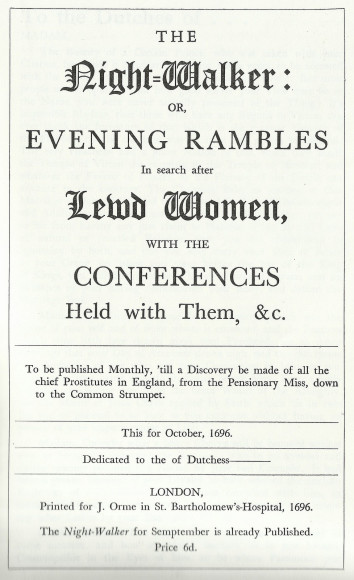The Nocturnal Picaresque
A “noctuary” is “an account of what passes at night” — this lovely little word opens the door to so many mysterious musings…
The Nightwalker and the Nocturnal Picaresque
The introduction of street lighting to 17th-century London saw an explosion of nocturnal activity in the capital, most of it centering around the selling of sex. Matthew Beaumont explores how some writers, with the intention of condemning these nefarious goings-on, took to the city’s streets after dark, and in the process gave birth to a peculiar new literary genre.
“At the end of the seventeenth century a new literary genre or subgenre emerged in England, one that might be characterized as the nocturnal picaresque. Its authors, who were moralists or satirists or social tourists, or all of these at the same time, and who were almost invariably male, purported to recount their episodic adventures as pedestrians patrolling the streets of the metropolis at night.
These narratives, which often provided detailed portraits of particular places, especially ones with corrupt reputations, also paid close attention to the precise times when more or less nefarious activities unfolded in the streets. As distinct from diaries, they were noctuaries (in his Dictionary of the English Language [1755], Samuel Johnson defined a “noctuary” simply as “an account of what passes at night”).1 These apparently unmediated, more or less diaristic accounts of what happened during the course of the night on the street embodied either a tragic or a comic parable of the city, depending on whether their authors intended to celebrate its nightlife or condemn it as satanic…”
For the rest, click here to go to The Public Domain Review.
Share

